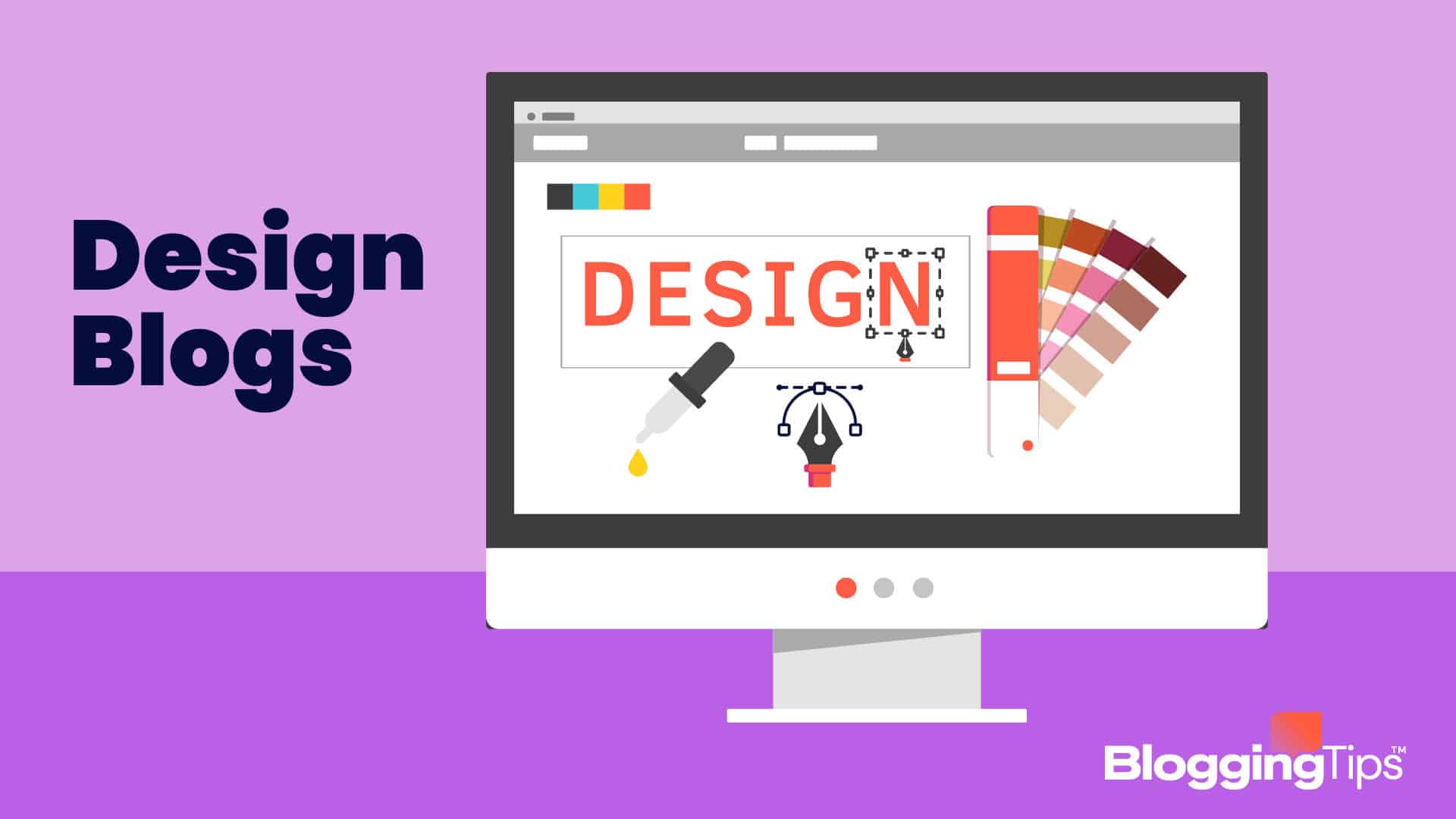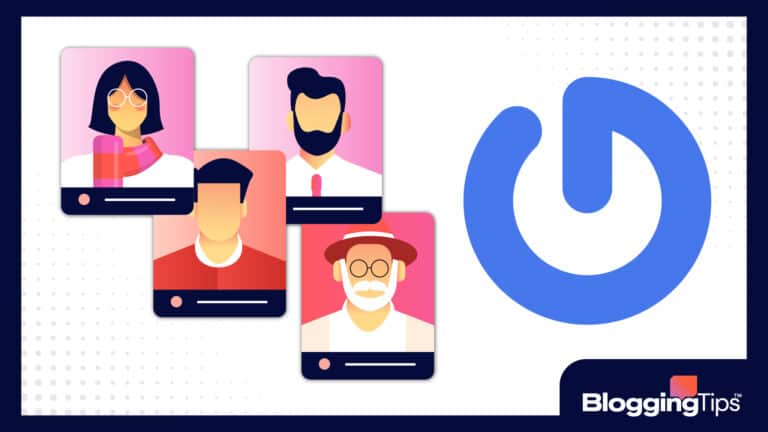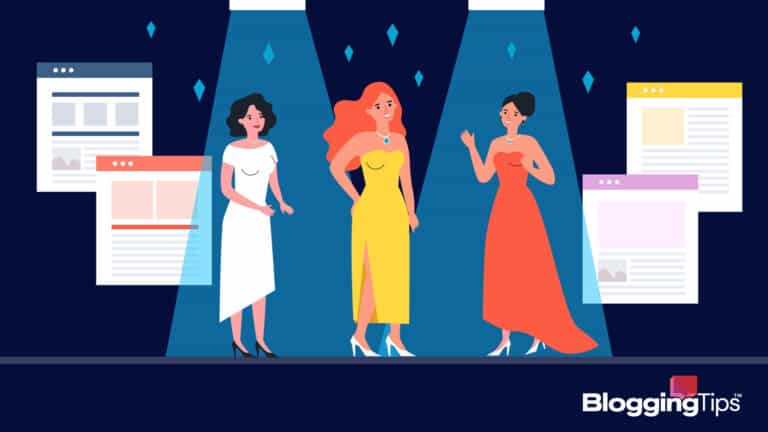Whether you’re a graphic designer or illustrator-for-hire, design blogs are an excellent way to promote your business, highlight your work, and network with your peers.
Of course, even with endless topics to write about, you might be at a loss as to where to start.
That’s where we come in.
This article will outline design blogging, including how to start a blog and what content to include.
- The Best Design Blogs (Examples)
- What Is a Design Blog?
- What Is Included On a Design Blog?
- Types of Design Blogs
- Do Design Blogs Make Money?
- Products To Promote and Sell on a Design Blog
- Best Design Blogs: 25 Examples
- How To Become a Design Blogger
- Produce Content for the Blog
- Similar Blogging Types To Check Out
- Frequently Asked Questions
- Wrapping Up
The Best Design Blogs (Examples)
We’ve included an overview of our top picks below. For detailed information on each pick, scroll down.
Graphic Design Blogs
Design Blogs for UX/UI Design
Design Blogs for Interior Design
Design Blogs for Illustration & Art
Design Blogs for Packaging
What Is a Design Blog?
A design blog focuses on all areas of design.
For example, design blogs can focus on UX, graphic, or interior design.
If you’re a designer in any industry, your content will be valuable, so a blog can help boost your brand.
What Does a Design Blogger Blog About?
Design bloggers can blog about any design topic under the sun.
So, for example, if you’re a graphic designer, you could cover the newest programs that allow you to create stunning designs.
Or, if you’re a user experience designer, you might share the latest research regarding how users interact with digital content.
There’s truly no limit.
What Is Included On a Design Blog?
When you start your design blog, it’s important to remember that more goes into it than simple content creation.
Of course, you’ll have to craft beautiful blog posts.
However, there are a few other things you’ll need to make sure your blog has for it to be successful.
1. A Focus
When you create your design blog, you need a niche that helps you stand out from the crowd.
A few examples of design blog focuses include bad web design examples, the latest designer news, or product reviews and updates.
Just be sure to choose one with few competitors to avoid getting lost in a sea of similar content.
2. Your Brand
Most blogging sites have an established aesthetic and purpose.
For example, you might have a tagline, regular blog installments such as “product of the week,” or a focus on news and breakthroughs in your industry.
You want readers to know your content when they see it and seek you out for specific information.
3. A Great Format
As a designer, you know just how vital a good site design is.
Site design includes smooth organization and navigation.
However, if web or user experience design isn’t your forte, you might consider consulting a professional to ensure your site is up to snuff.
A solid site format will include intuitive navigation, content where users should expect it, and a clear site map.
In addition, your page elements should be arranged in a way that makes your content aesthetically pleasing.
4. Products or Services
Some design blogs offer products and services to their clients.
These include books, advice, or physical products visitors can use to understand or implement design in their own life.
If you don’t have saleable content, you could always include a section on recommended products.
For example, you could have a page focusing on the best interior paints or online Photoshop seminars.
Not only is it a great resource but it’s an excellent way to monetize income with affiliate links.
5. Relevant Content
It should go without saying that all your blog content should be relevant to your niche and audience.
However, you’ll need to have more than just relevant, compelling content.
You need to ensure your theme is consistent throughout, even the sources you link to and the calls to action (CTAs) you use.
Other Things That You Can Find on a Design Blog
Here are a few other components you’re likely to find on a successful blog.
- Advertisements: Although advertisements aren’t strictly necessary for all blogs, they’re invaluable if you want to monetize your content.
- Reviews: Detailed product reviews draw readers and build site authority.
- Graphics: Charts, graphs, images, videos, and infographics visually enrich your content.
- Social Media: A solid online footprint includes social media, so include your social links on your blog.
Types of Design Blogs
Design blogs are versatile, but choose one subject you are knowledgeable about to ensure you’re seen as an authoritative source.
No matter what product you design or the service you offer, you’ll be able to find a niche within one of the following blog types:
- Graphic Design Blogs: Graphic design includes all digital design. Branding, logos, website design, and typography are all graphic design examples, each of which could provide plenty of blog content.
- Design Blogs for UX/UI Design: UX/UI design is one of the most critical aspects of web design. A blog focusing on how users interact with content, their experiences, and what they expect is an excellent vehicle for sharing information.
- Design Blogs for Interior Design: Interior design blogs focus on the physical design aspects of a home or a building. These aspects include decor, furniture, or other areas within a physical location where users might consult a designer for help.
- Design Blogs for Illustration & Art: Illustration and art blogs can cover everything from digital paint styles to sculpting or design history. They often touch on various industries, from commissioned work to book covers.
- Design Blogs for Packaging: Packaging design is a topic many non-designers might not think of often. However, blogs that focus on product packaging are invaluable to the designers who craft containers for businesses or other entities.
Do Design Blogs Make Money?
You’ve probably heard that bloggers can make good money monetizing their content.
However, have you ever wondered how some designers are able to make a living blogging?
Here’s a bit more information.
How Do Design Blogs Make Money?
There are plenty of different types of blogs that make money, but one thing that’s successful for them all is sponsored posts.
A blogger will charge a fee to businesses looking to increase their online exposure.
Another way to earn income blogging is via affiliate marketing.
When you sign up for an affiliate program, you’ll get links you can give users to certain products or services.
Each click will gain your income.
Some design bloggers generate income by offering products or services.
For example, you could provide design consults, commissioned art, or web design online to users through your blog.
In addition, you could sell design courses or similar resources to monetize your knowledge and further build your reputation as an authority source.
How Much Do Design Blogs Make?
What you make as a design blogger will depend entirely on your offerings.
Most bloggers earn an average of $53,000 per year.
However, as a designer, you’ll likely have unique services to provide in addition to blogging income.
Your standard services combined with affiliate or sponsored income could significantly increase that average.
Products To Promote and Sell on a Design Blog
A perk to design blogging is that you can feature many supplemental services through your website.
Indeed, many design services, including interior design, can be done online these days.
If you provide any kind of design service in person, you should consider adding an online operation to your business.
In addition, you could offer products on your website.
Books, courses, and other digital content are incredibly popular.
However, if you don’t have your own items, you can create an affiliate shop page for any goods you’ve reviewed or recommended.
Best Design Blogs: 25 Examples
Before you design your blog, you should take time to do some market research.
Exploring the other blogs in your focus area will give you an idea of what content readers are looking for.
But, more importantly, you’ll be able to find gaps in existing content that need to be filled.
How Many Design Blogs Are There?
There’s no way to know precisely how many design blogs are out there.
However, it’s safe to say you’ll have hundreds, if not thousands, of design blogs in any given niche, with more getting added each day.
Graphic Design Blogs
Take a look at this selection of graphic design blogs you can glean a bit of inspiration from.
Each offers unique features readers love.
Creative Boom
A one-stop shop for graphic design information is Creative Boom.
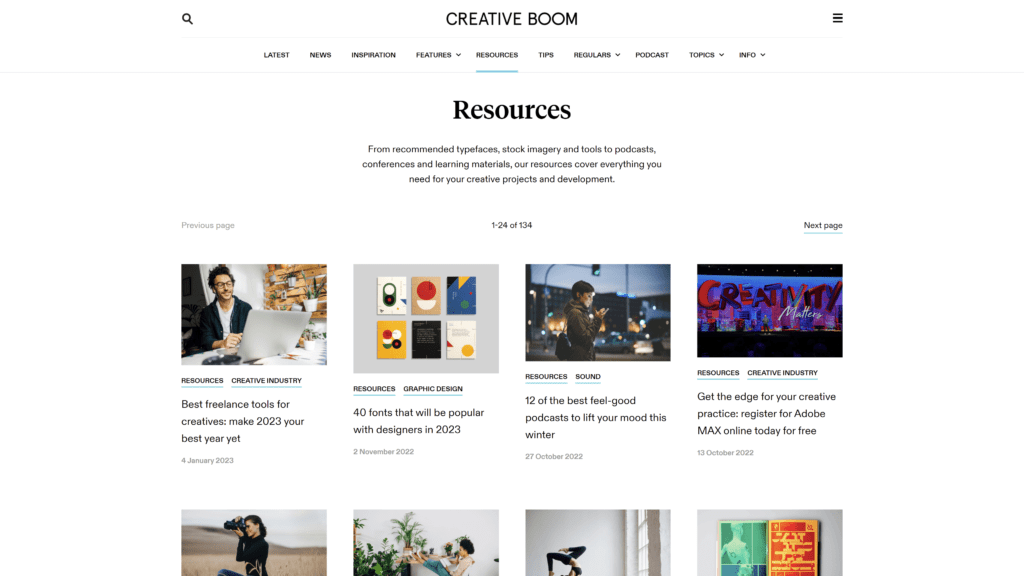
Not only does Creative Boom have an extensive blog, but it also has news, tips, and inspiration for designers.
In addition, it has a podcast, making it a valuable tool if you’re considering adding one to your offerings.
As far as multi-purpose blogs go, Creative Boom is a worthwhile site to explore for budding bloggers.
Mirador
If you want to see how a sleek, sophisticated graphic design blog functions, check out Mirador.
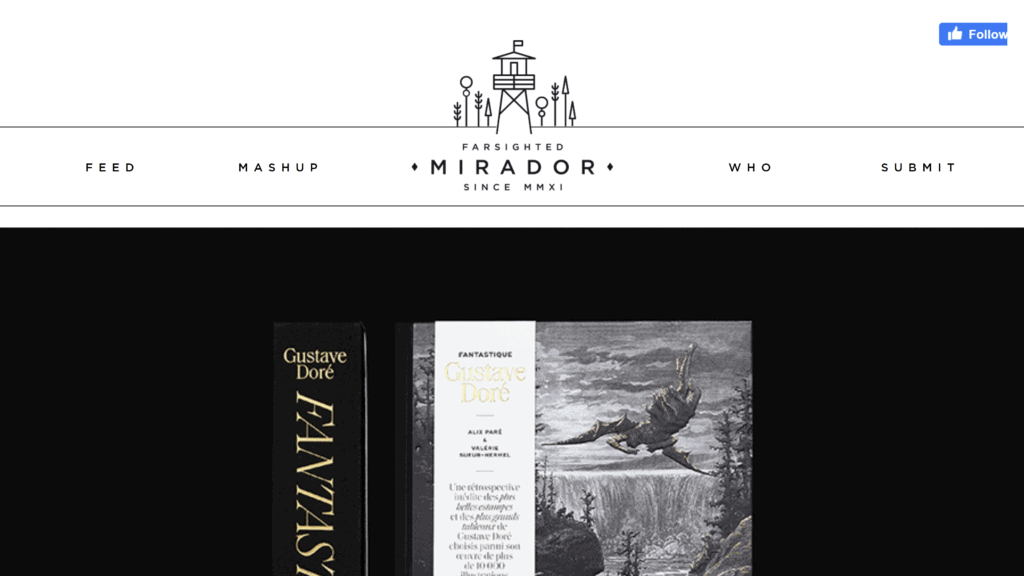
It’s the epitome of minimalism, making it an excellent example if you want to create a no-fuss design on your website.
What’s best is it hosts heaps of informative content to help designers of all skill levels improve their craft.
Incredible Types
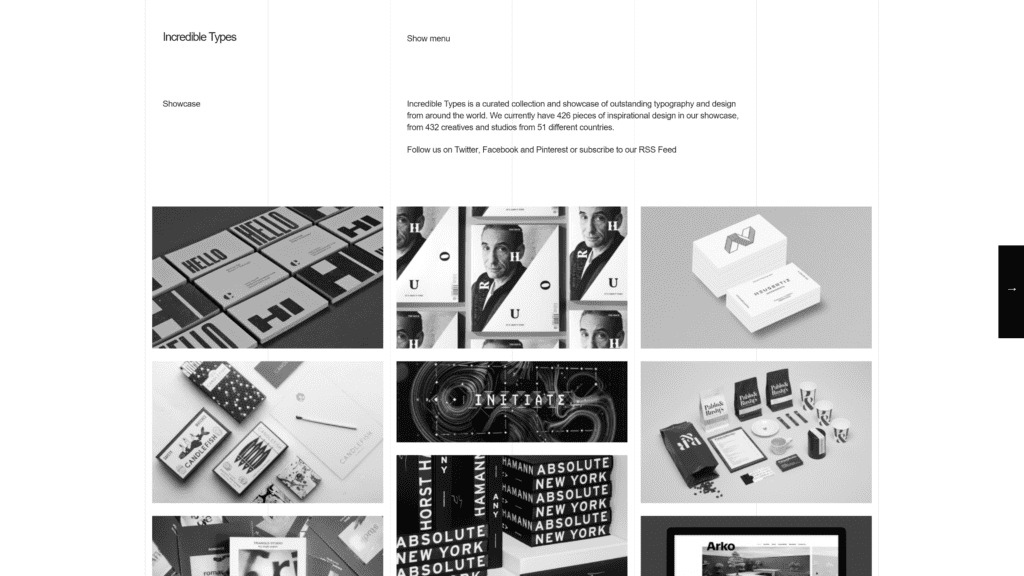
Are you planning on blogging about typography or some other small niche?
Then you need to visit Incredible Types, a blog focused on showcasing the best typography and graphic design.
Not only does it have a sleek look, but it shows how easy it is to successfully blog about a niche topic.
This one will be especially useful for marketing or publication designers.
I Love Typography
Another fun typography blog is I Love Typography, which showcases fonts from a whole host of designers.
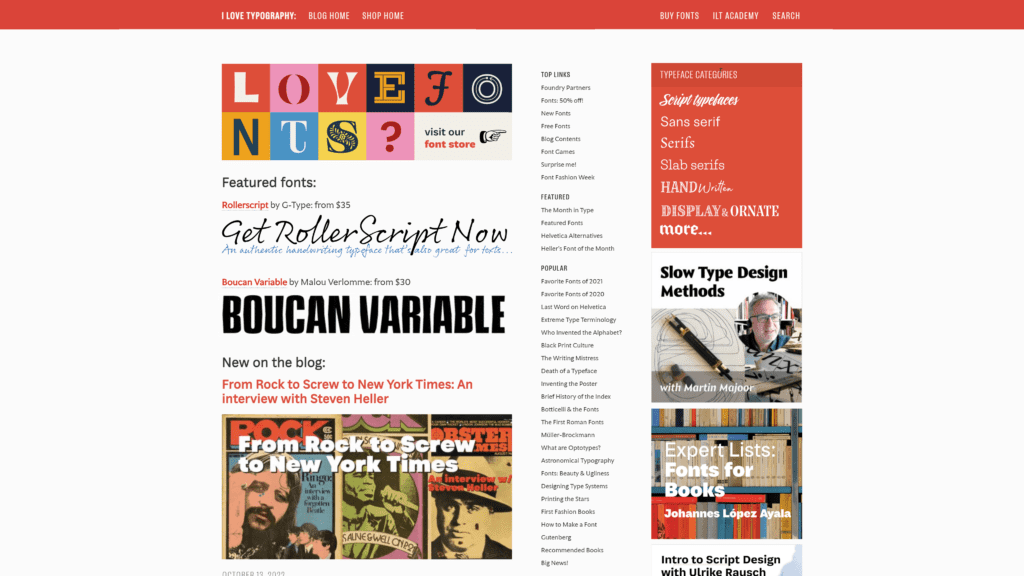
Its standout feature is that it directs users to resources for free fonts, featured fonts, and, of course, fonts for sale.
Whether you use it as inspiration or a source for design elements, it’s worth bookmarking.
BrandNew
Brand New, a division of UnderConsideration, is a graphic design website that shares opinions on brand identity.
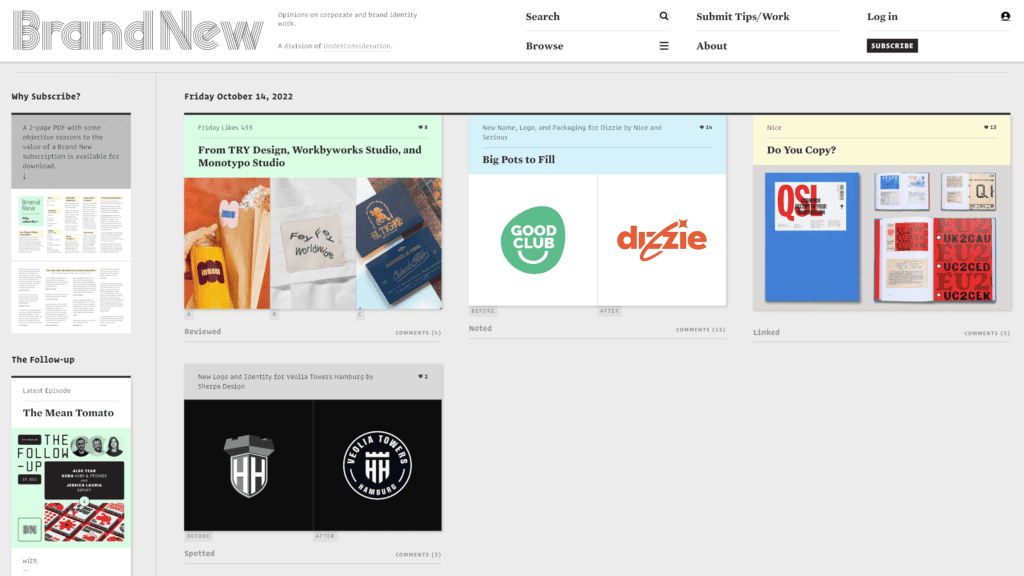
They cover rebrandings of popular products and companies and regularly share the latest branding and design news.
It’ll be a good place to start if you’re looking into opinion pieces or simple content.
Design Blogs for UX/UI Design
User experience and user interface design blogs are becoming increasingly popular with designers looking to increase their skills.
Here are a few you can look to for information.
CareerFoundry
CareerFoundry is a site dedicated to helping people build careers as UX/UI designers.
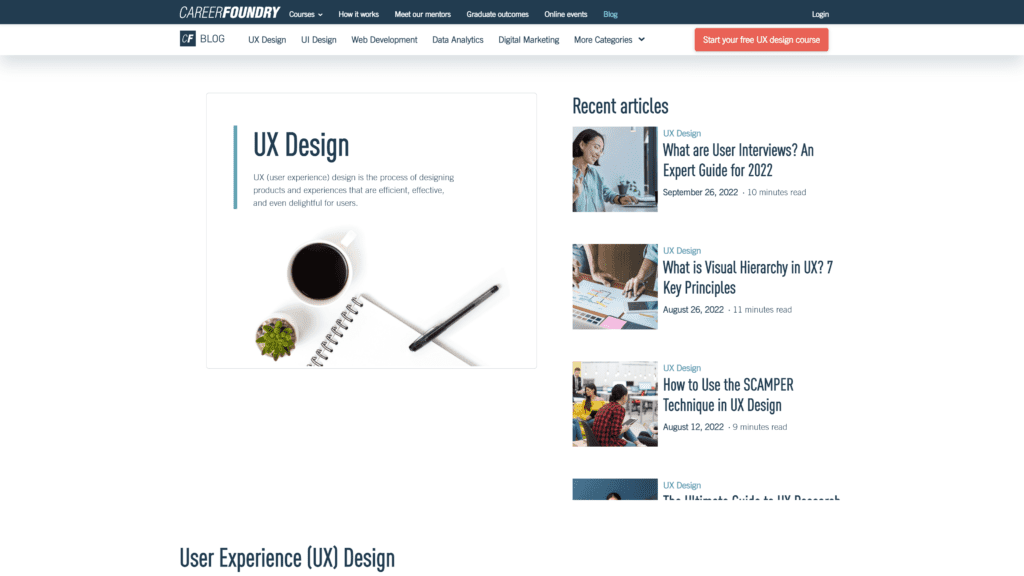
Its blog is rife with information for designers of any skill level, but it’s especially useful for those who are still learning.
You’ll find articles, courses, and other information on design, analytics, and web development, all created to help aspiring bloggers make the best website possible.
Chameleon
Chameleon offers users an assortment of articles relating to UX/UI design.
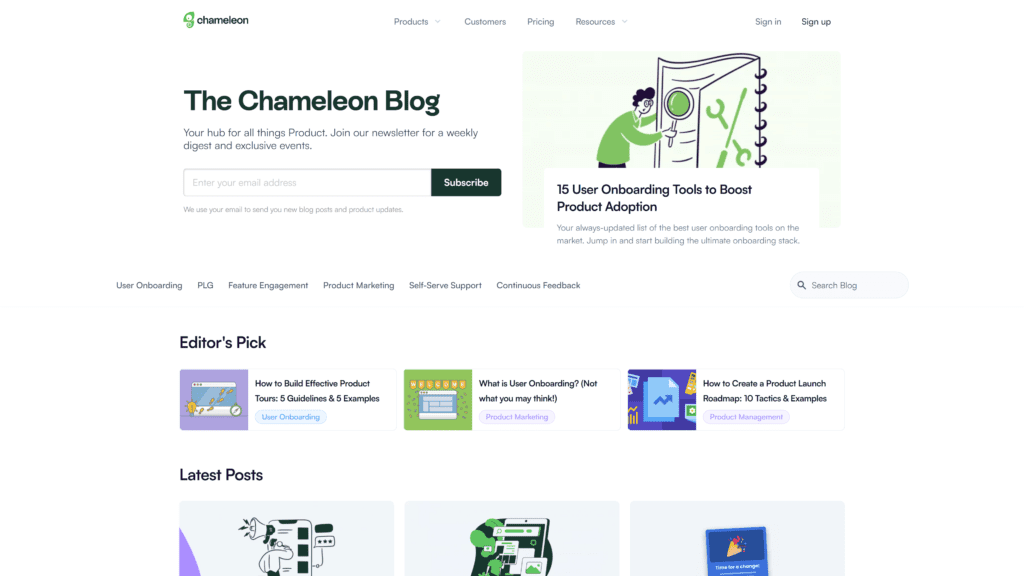
You’ll find content focused on topics like user onboarding, UX/UI research, and user psychology, to name a few.
It’s an excellent resource for novice and experienced designers.
For bloggers interested in focusing on the user’s thought process, Chameleon is a great place to start.
Nielsen Norman Group
The Nielsen Norman Group is a UX consulting firm that provides global services.
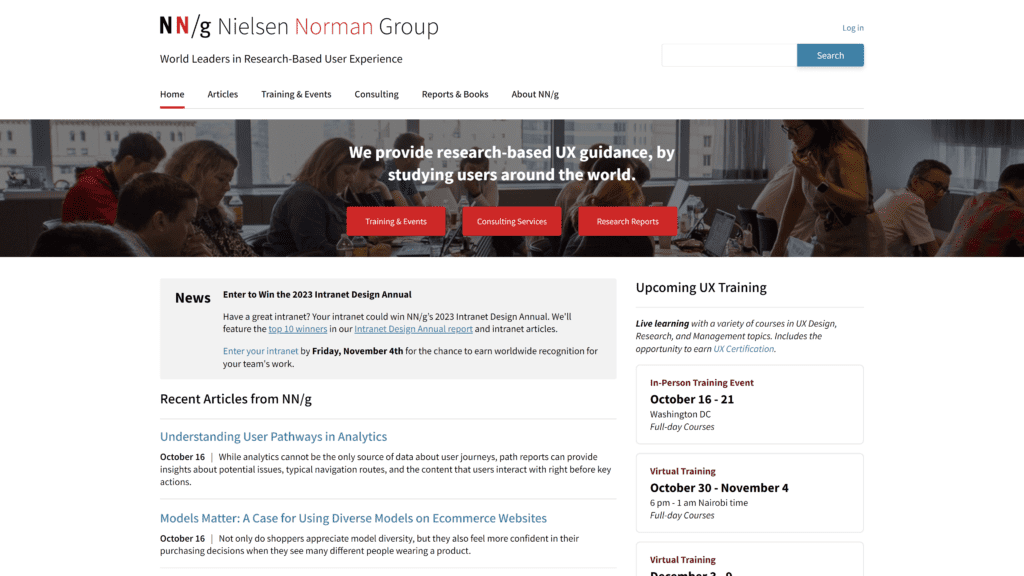
Its blog focuses on deeper UX/UI design topics, including user research, stakeholder studies, and psychology and research methods.
The Nielsen Norman Group gets more into the nitty gritty of UX design, so even if you don’t plan to dig that deep into your own content, you should keep it in mind as a resource for designing your site.
UX Planet
UX Planet focuses heavily on the psychology and human element of UX/UI design.
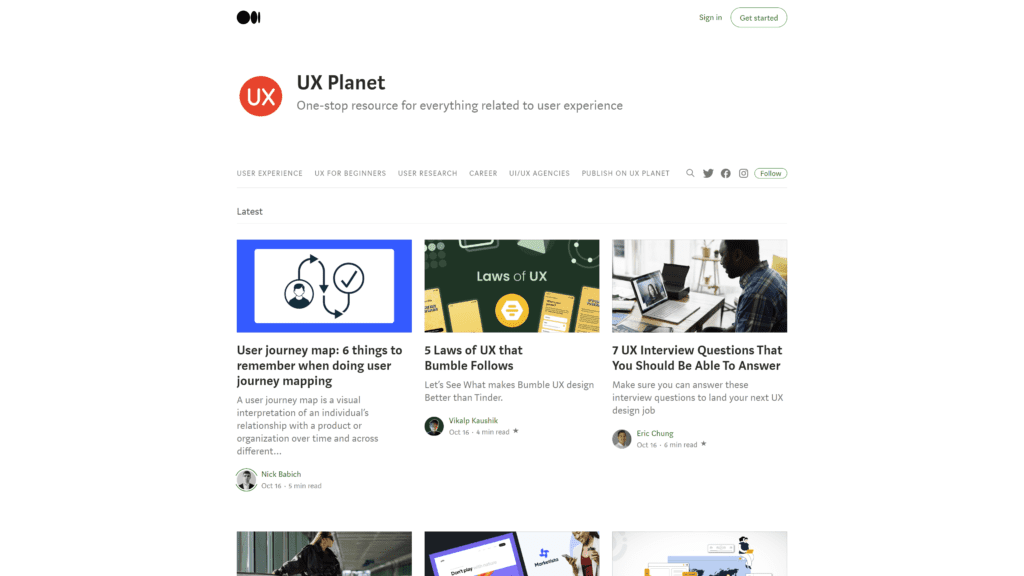
You’ll find topics including emotional and cognitive processing, user research methods, and various design theories.
There’s a wealth of information for beginners that covers the basics as well as more complex content for those who’ve been in the game for a while.
Design Shack
Design Shack has a bit of everything for UX designers.
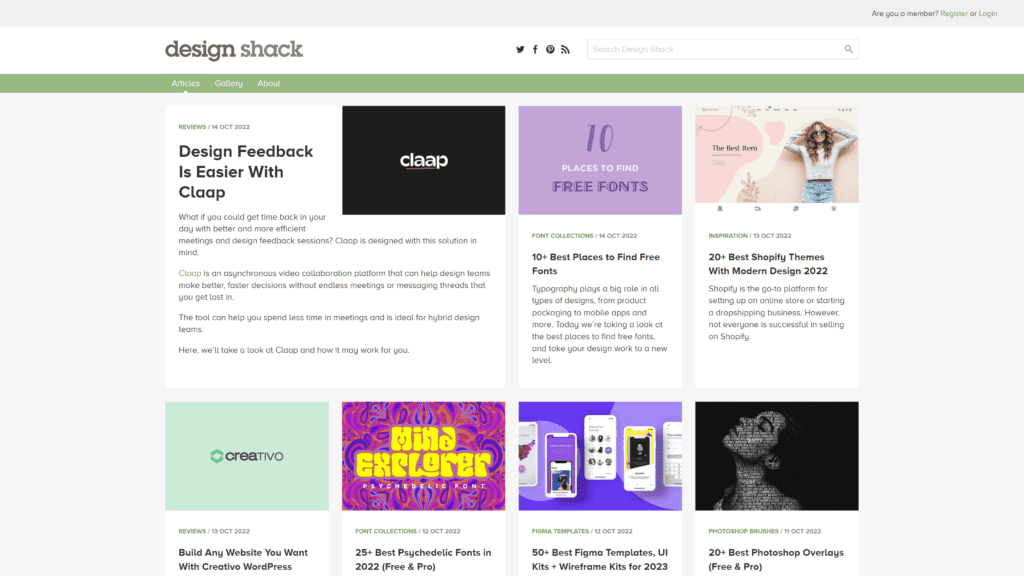
You’ll find information on trending fonts and features alongside the best templates and layouts to use for a user-friendly experience.
There’s also a complete design gallery you can get inspiration from.
While this blog is a bit more basic than some of the others, it’s a perfect example of where a new blogger can start out.
Design Blogs for Interior Design
Are you an interior designer looking to expand your digital footprint?
Check out these blogs for the best way to get started.
Cassandra LaValle
Cassandra LaValle, formerly Coco Kelley, is an interior design blog by Founder Cassandra LaValle.
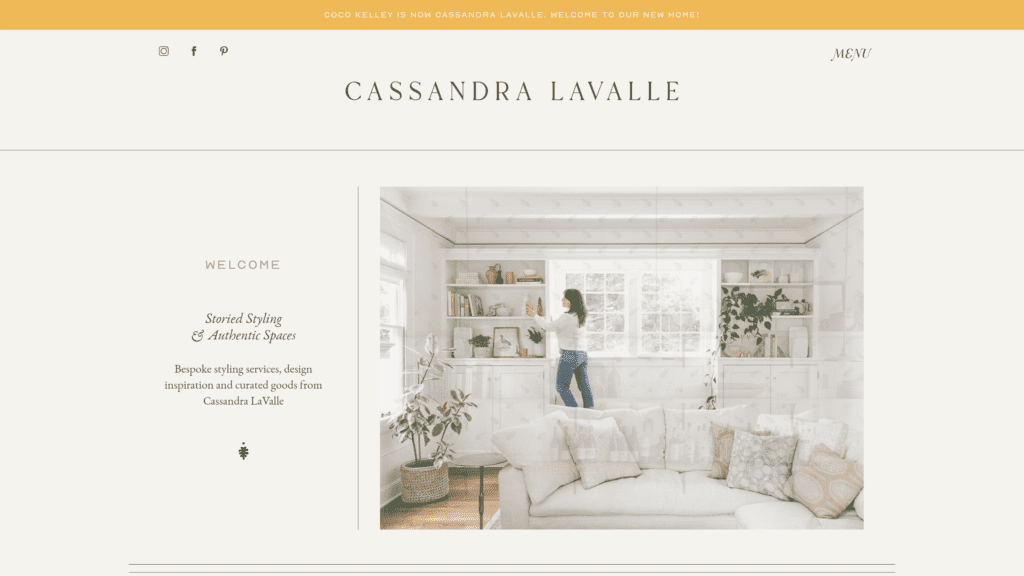
Cassandra aims to tell stories through design by incorporating unique pieces into a space.
In other words, she enjoys focusing on the emotional connections people have to their spaces.
If you want to focus your blog on bespoke design, this is an excellent blog to dig into.
Coco Cozy
Created by home furniture designer and influencer Colette “Coco” Shelton, Coco Cozy provides interior design inspiration for homeowners and designers.
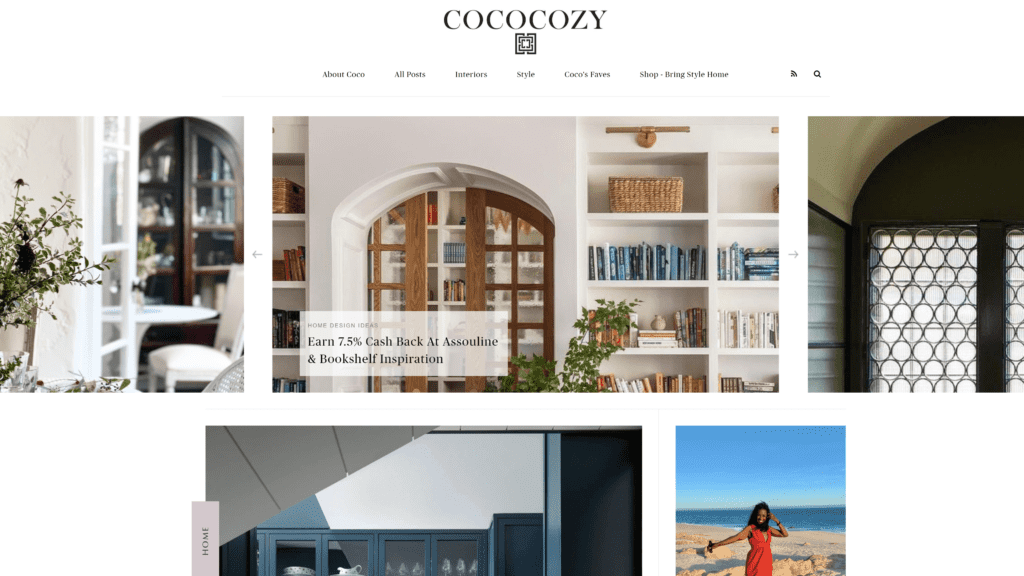
Aside from this content, Coco has a line of home goods and a streaming docu-series on Amazon and Kobo that shows her renovations and methods.
Her site is a good resource for design bloggers who want to tap into multiple audiences.
Apartment Therapy
Interior design isn’t just for houses, and that’s exactly why Apartment Therapy centers on designs for apartments and smaller spaces.
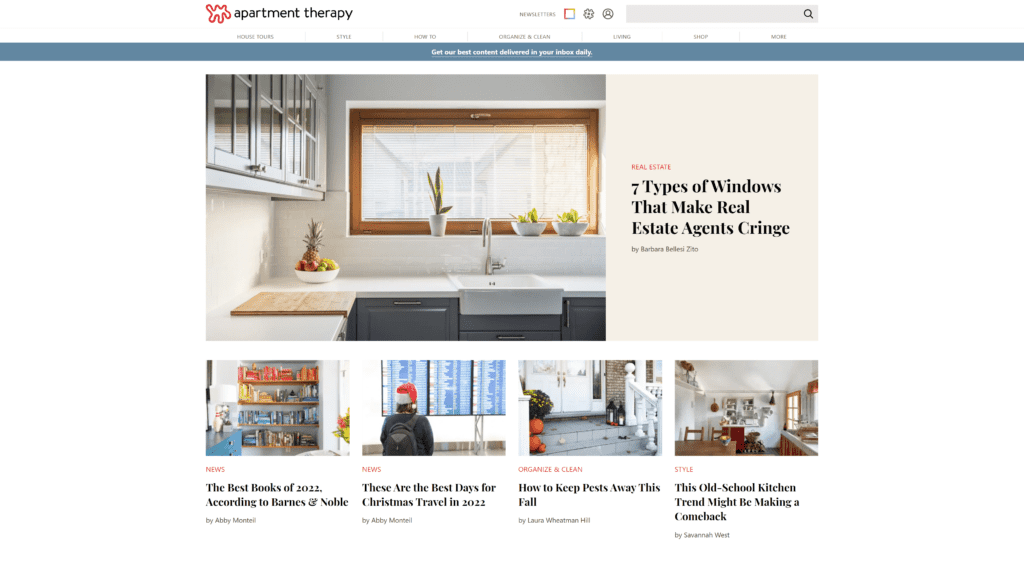
You’ll find before and afters, plenty of ideas, and how-tos on Apartment Therapy, which should give you great inspiration if you’re thinking about a similar blog.
Hunted Interior
Hunted Interior offers interior design advice for all types of homeowners.
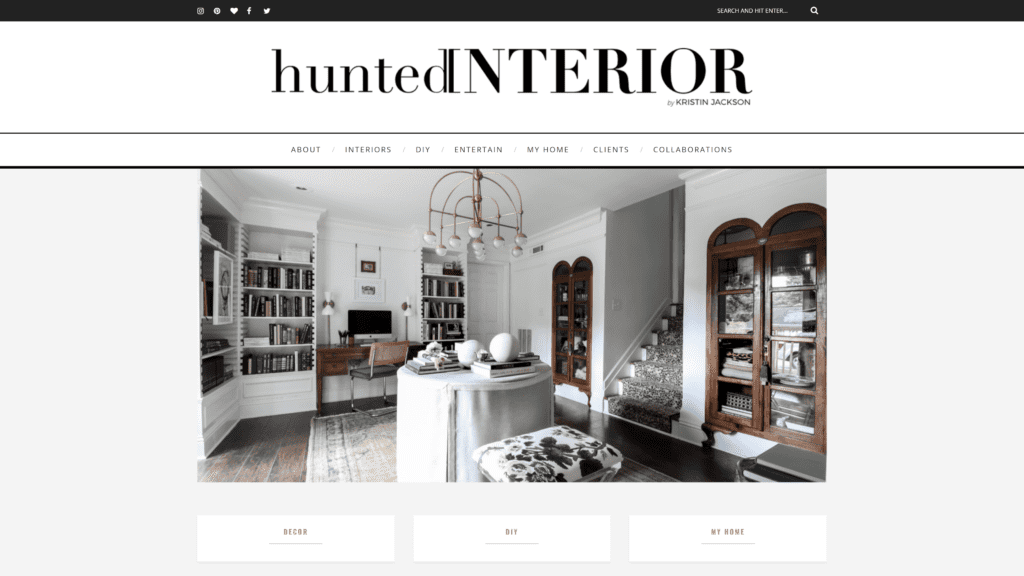
In addition, it has a “One Room Challenge” series that’ll give you insight into how to post running content to leave readers excited to come back to your site.
If you think you want to run a blog series, Hunter Interior is a great resource to read.
Design Sponge
Design Sponge’s interior design ideas bring a nice mix of country living and modern chic to its site.
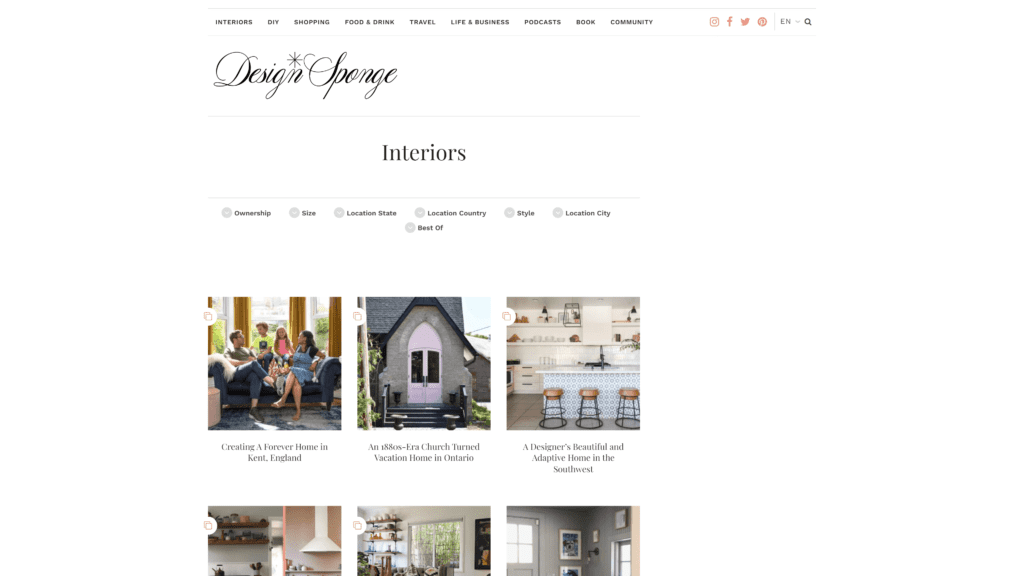
The writers cover design stories as opposed to how-tos and product reviews, which is what you get with many other blogs.
It’s an excellent resource if you’re into long-form expository content or articles that don’t focus on the “how” behind design as much as the “why.”
Design Blogs for Illustration & Art
Digital artists and illustrators fall squarely into the design category, so here are a few blogs you should check out if that’s your niche.
Pikaland
Pikaland is a blog dedicated to leading newcomers to becoming illustrators.
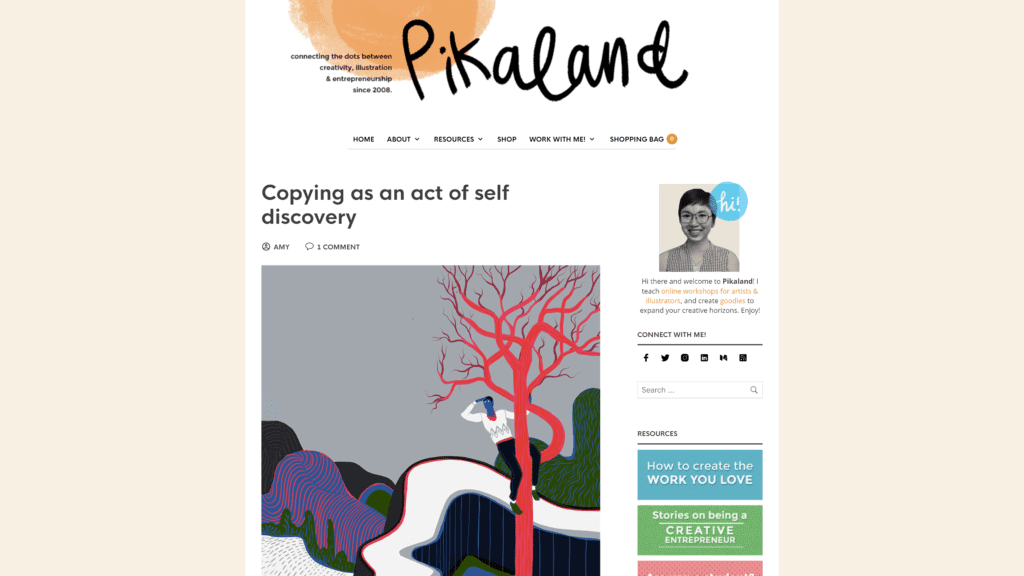
The founder, Amy Ng, features lots of tips on how to get started, courses, and other tools to help readers hone their craft.
Moreover, you’ll find prompts, such as 1,000 Things to Draw, that are intended to spark creativity.
Ng offers one-on-one consultations, which is another source of income for the site owner.
Illustration Art
The first article on Illustration Art’s site is “Do AI Artists Dream of Electric Sheep?” That title should give you a good idea of what to expect from this art-focused blog.
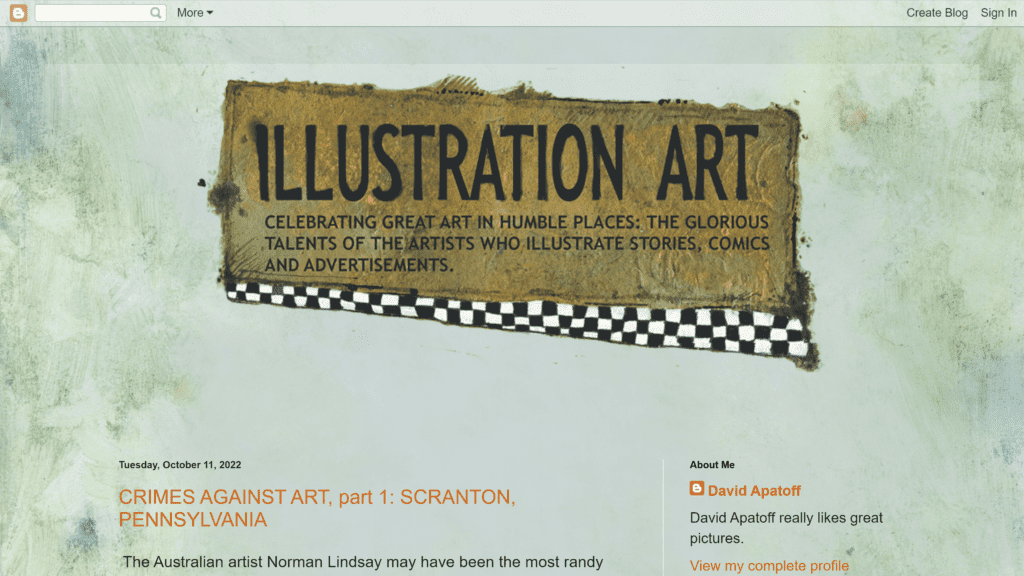
The author enjoys discussing various art styles that illustrators and artists use today.
You’ll also find information on art history as it applies to modern and digital art.
Lines and Colors
Lines and Colors is a blog that touches on all types of art media.
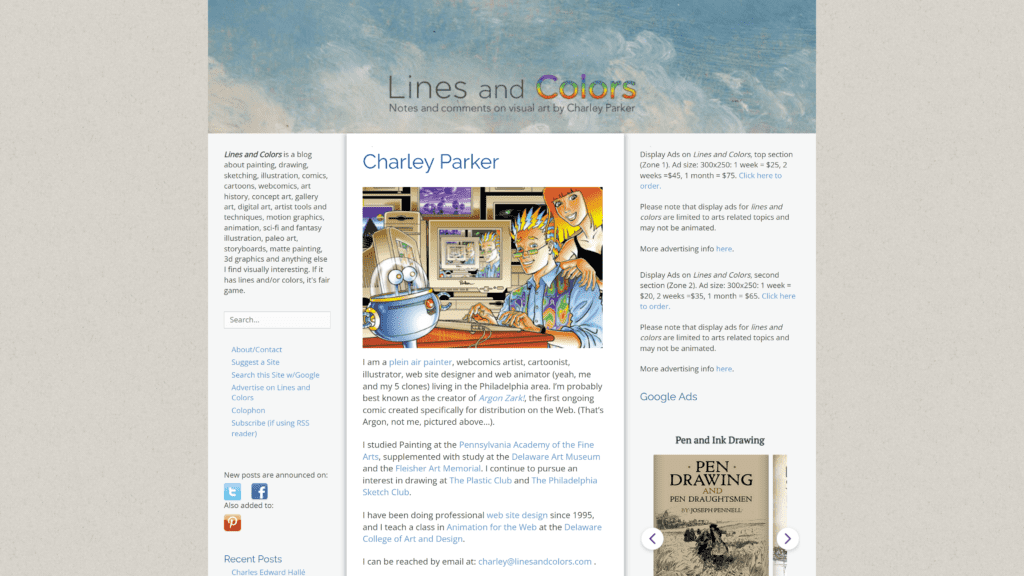
It covers everything from sketching to webcomics, highlighting the differences and origins of each.
The site’s Digital Art section will probably be the most useful for you, as it contains examples of the artist’s own work and that of many others.
Domestika
Domestika’s blog has an entire Digital Painting & Illustration section that’ll give new artists and bloggers tons of inspiring content.
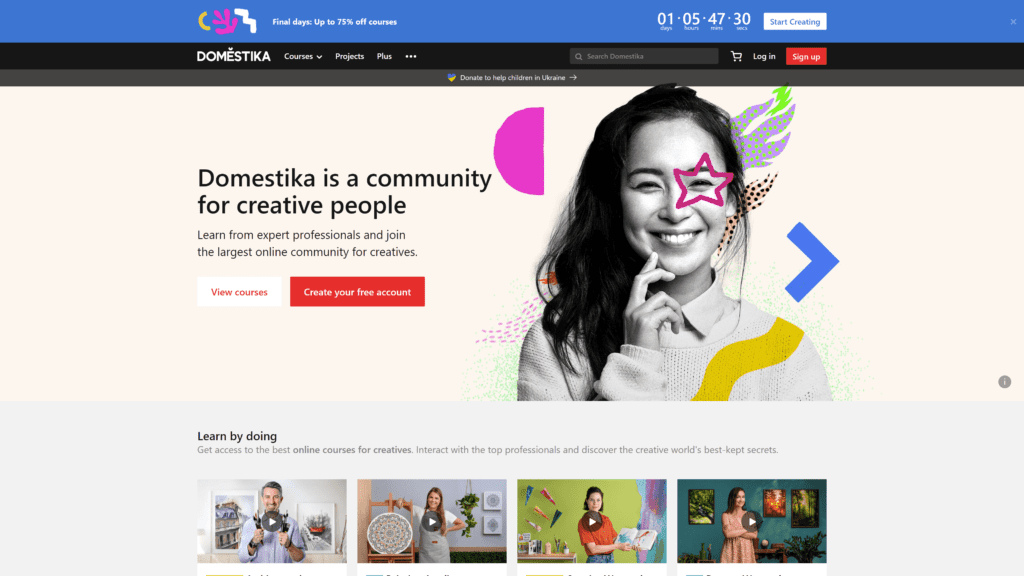
Self-dubbed “a community for creative people,” Domestika is a multi-faceted site.
It includes courses, tutorials, and other information for artists looking to improve their digital art skill sets.
Illustration Age
Illustration Age is an illustration blog that highlights the human element of art.
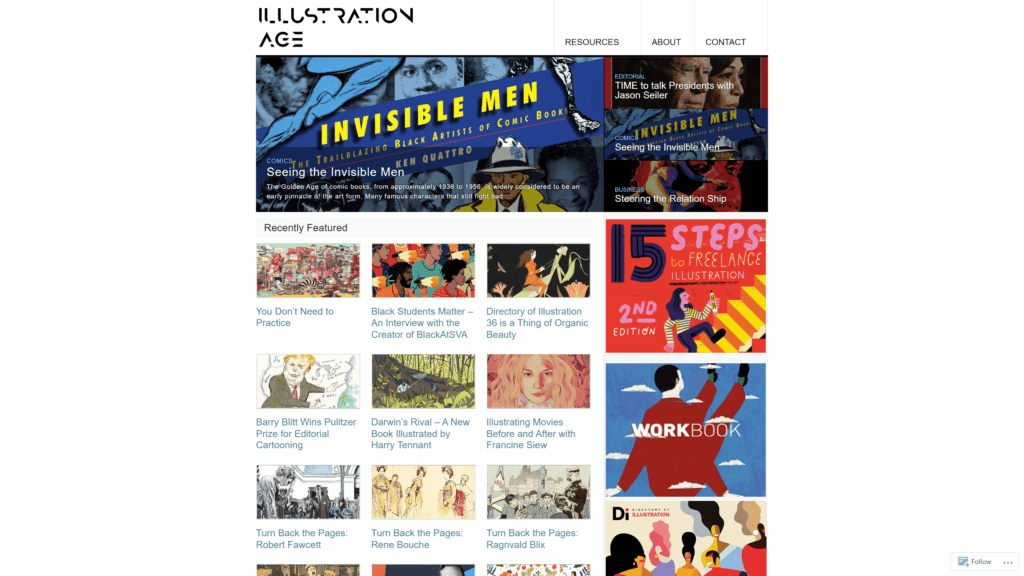
You’ll find content centered around theory, techniques, and news to help artists better understand their field.
In addition, it’s a fantastic place for design bloggers to research how to incorporate the more complex aspects of digital art into their content.
Design Blogs for Packaging
Are you a package designer looking to expand into blogging?
Check out these five blogs for inspiration.
The Packaging Insider
The Packaging Insider provides package designers and bloggers with a wealth of information on package design.
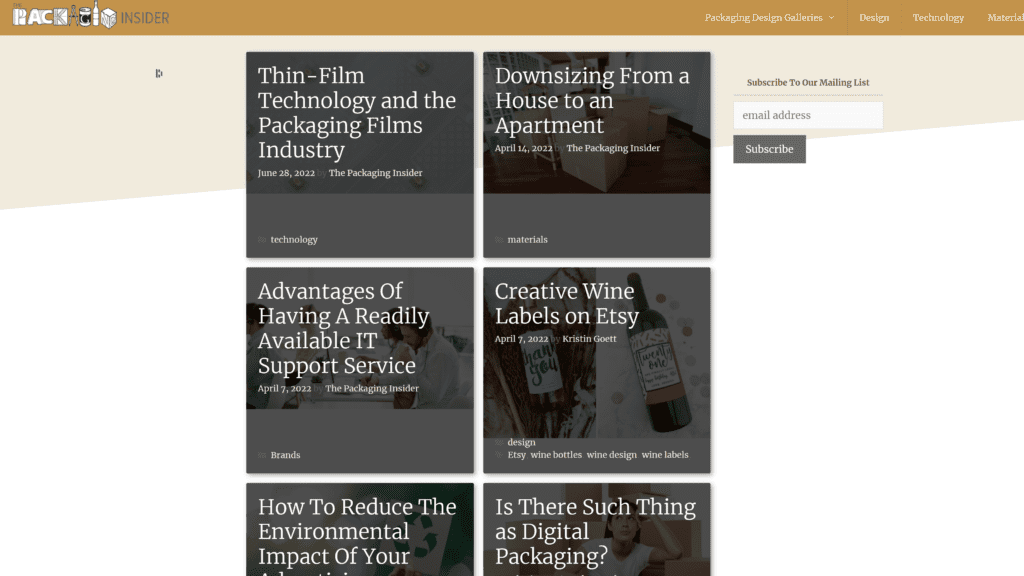
Some topics include packaging technologies, business practices, and “Best of” articles.
There’s also an extensive packaging design gallery to give users inspiration for their own designs.
The Dieline
As one of the most popular packaging design blogs, The Dieline should be one of the first places you look to.
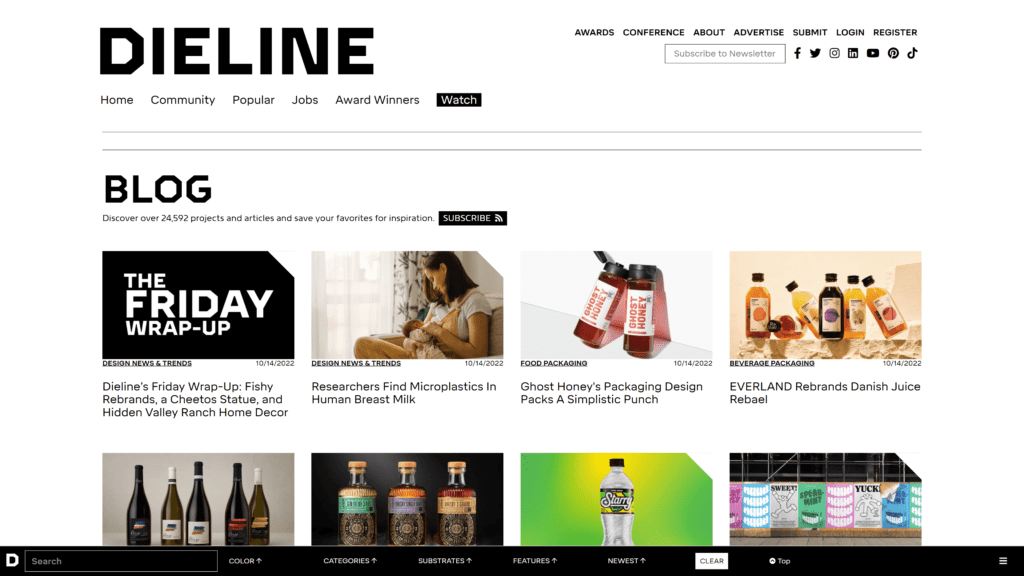
It has vibrant images, catchy titles, and niche topics you’re unlikely to find anywhere else.
You should check it out for both its content and design elements to get some ideas for your own blog.
Packaging News
Packaging News is precisely what you’d expect–a website dedicated solely to everything related to product and shipping packaging.
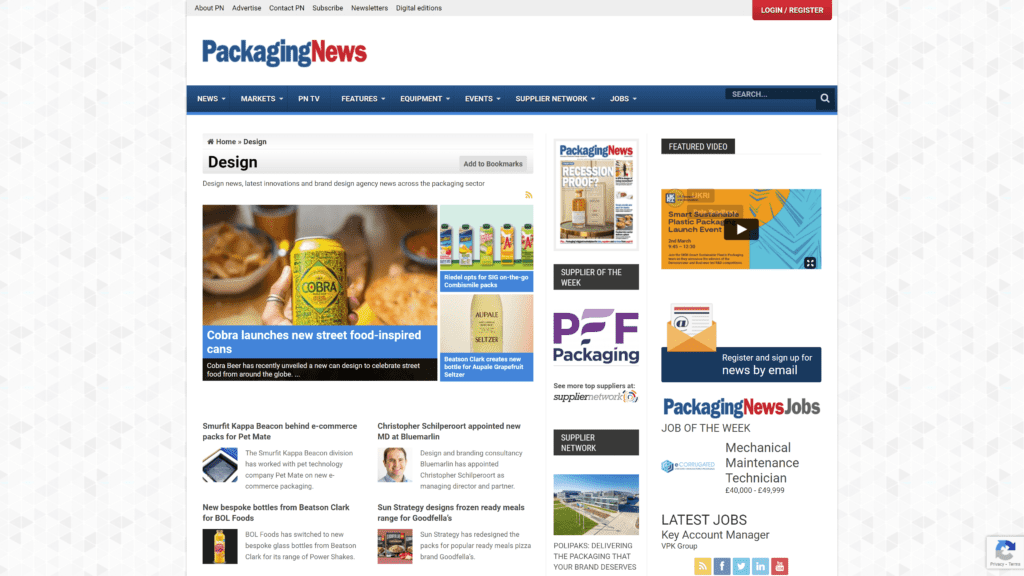
This includes designs, research, and news that help package designers improve their offerings.
Users can also access a supplier network, white papers, and case studies designed to strengthen any packaging business.
BP&O
BP&O is a packaging design site with a minimalist style.
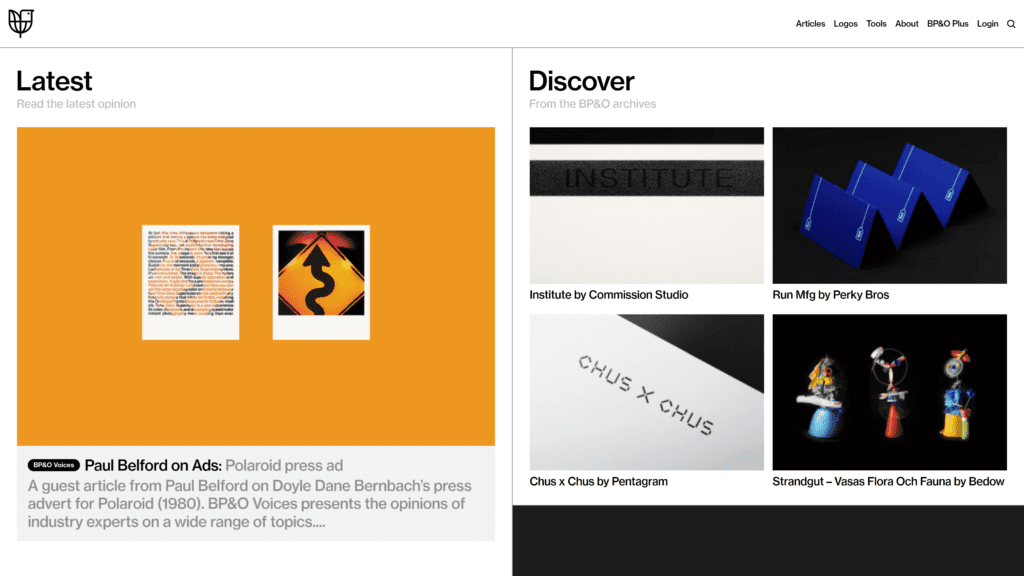
Its streamlined layout, aesthetically pleasing images, and smooth graphics make it a site that instantly provides reader comfort.
It’s an excellent example of a user-friendly design that makes the product packaging the focal point of each post.
Packwire
Packwire is a custom packaging business that works with small and large organizations.
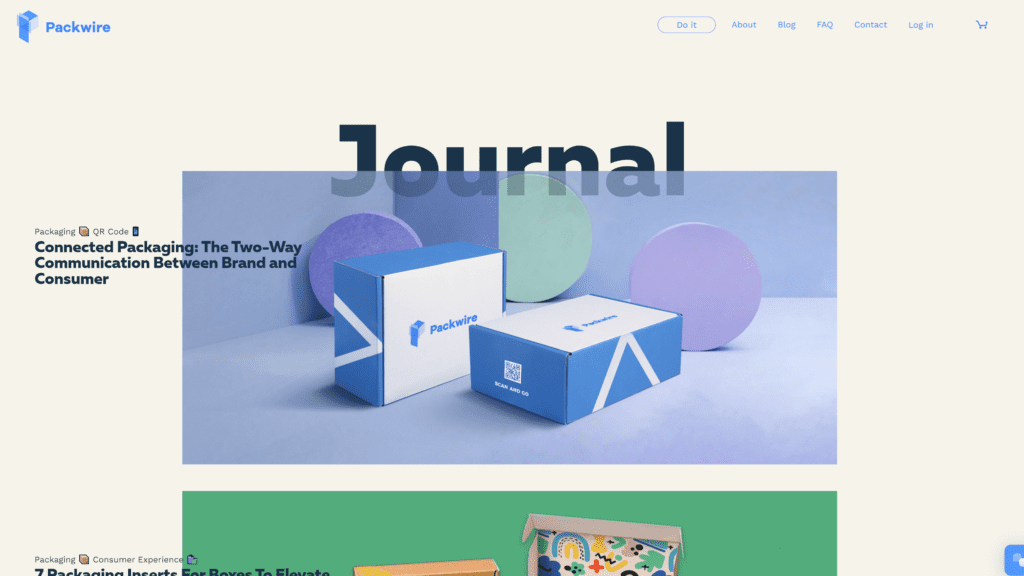
Its blog provides businesses with ideas for package design, inserts, and other features that help users decide which packages are best for their products.
What’s best is that it’s a gold mine for designers looking for inspiration for their next project.
How To Become a Design Blogger
So, now that you’ve read over some design blog examples, you’re probably wondering how to get started on your own site.
Fortunately, we’re pretty knowledgeable in that area, so we’re here to help.
If you’re ready to get started on your blog, follow these steps.
Determine the Direction of the Blog
The first thing you need is to do niche keyword research to uncover opportunities for blog topics.
As you examine your keyword research, you’ll find topics that users often search for.
Then, once you have a solid list of keywords, you can pick the under-saturated topics and aim your blog in that direction.
Select a Niche
Next, you’ll need to choose your niche, or specific sub-topic, for your blog.
Not sure how to choose the right niche?
All you have to do is consider several factors, such as your passion, knowledge, experience, or even existing audience.
You’ve already found a direction for your blog, so your next step is to narrow it down to something more specific.
Select a Name
Coming up with a blog name can be equal parts exciting and exhausting.
A blog name should be creative yet memorable.
At the same time, you want it to roll off the tongue and perhaps be a bit quirky.
Your best bet is to stick to something short and sweet that your users won’t forget.
With that in mind, avoid overly complex names and anything that uses a mix of letters, numbers, and hyphens if possible.
Select a Blogging Platform
Your next step is to choose your blogging platform.
There are many different blogging platforms available, so take some time to look at the biggest ones and see what each offers.
Then, choose whichever one best suits your needs.
Register a Domain Name
Once you’ve chosen your name and platform, it’s time to choose the best domain registrar for your site.
As with blogging platforms, you’ll have plenty of options.
You want one that makes it easy to manage and maintain your domain.
Then, choose a domain name that matches your blog title.
Get Web Hosting
Your web host is where your website “lives” online.
You’ll have to choose between web, traditional, and managed hosting.
Although there are many options, we suggest managed WordPress hosting due to its solid reputation and array of features.
Build the Blog
After you get the technical aspects of your blog out of the way, you can get to the fun part: building your blog.
Consider using the following features to make the process as seamless as possible.
Themes
If you’ve taken our advice and chosen WordPress for your blogging platform, you’ll want to install a WordPress theme.
A theme will make it easy to give your site a sleek, uniform look your users will love while providing additional features to support your content.
Plugins
WordPress plugins add dashes of unique functionality to your site you won’t get elsewhere.
Plugins include other themes, security features, or editors that will make creating an enticing, safe, and functional blog simpler.
Essential Pages
One of the most important things to remember is to include all the essential pages for your blog when building your site.
Essential pages include:
- About
- Disclaimer (if applicable)
- Product or affiliate pages (if applicable)
- Contact
- Terms of service
- Privacy policy
- Archives
- Portfolio
Depending on your topic, there might be other essentials to include.
Take a look at similar blogs and find some common threads.
Produce Content for the Blog
Creating content for your blog might be the most exciting part of the entire process.
Sure, designing it is fun.
However, outlining the content you’ll put on your site is where you can really let your personality shine through.
Look to outline several blog posts at once to get you through the first few months, when you’re likely to run into site hiccups.
Launch the Blog Publicly
Finally, it’s time to launch your blog publicly.
However, launching a new blog isn’t as simple as clicking the “Publish” button.
Before you send your content out into the world, comb through every page to ensure there aren’t any typos, broken links, or inaccuracies.
Promote the Blog
If you thought launching your blog was the final step, think again.
Once you’ve published your content, you’ll need to promote it.
There are plenty of ways to promote a blog, including on social media, paid advertisements, or email marketing campaigns.
Sort through the various methods and develop a well-defined digital marketing campaign that suits your style.
Similar Blogging Types To Check Out
Design blogs have the potential to overlap with several other niches.
If you’re unsure what you want to write about, you could consider similar blogging types to draw inspiration from.
You could even use these other content types to create a blended design blog!
1. Interior Design Blogs
Interior design blogs focus on designing interior spaces.
Homes, offices, and even outdoor spaces like patios or living areas all fall under the interior design umbrella.
Interior design blogs are ideal because there are an endless array of ways you can narrow down a niche.
2. Style Blogs
Style blogs discuss more than just design.
Instead, they share information on style, specifically fashion.
But, of course, fashion and design often go hand in hand.
So, if you can’t find an area to focus on, consider checking out this field.
3. Art Blogs
Art blogs are similar to their illustration and digital art counterparts.
The key difference is they cover all types of art.
Art blogs will consist of content related to art history, museum exhibits, and creating art pieces, to name a few.
Like interior design, art is an ideal topic because it has numerous focal points.
Frequently Asked Questions
Still have questions about creating a design blog? Here are a few common questions.
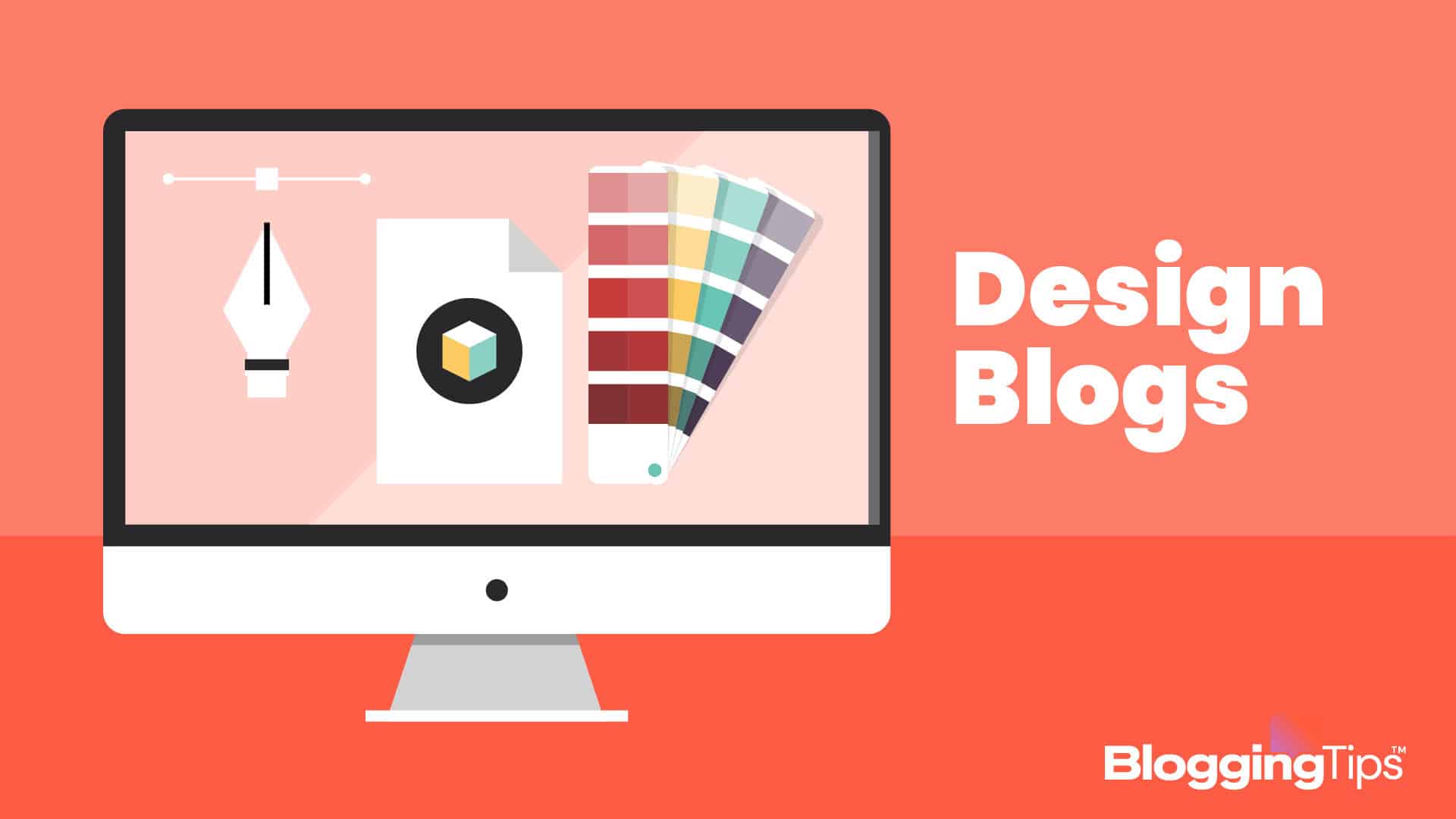
What is the best design blog?
No “best” design blog exists because every designer’s focus will vary.
To find the one most like your content, do a quick internet search using your keywords and check out the top results to find what you’re looking for.
What is a creative blog?
A creative blog steps outside the box when it comes to content.
Not only do creative bloggers write about obscure topics, but they do it in a fun, engaging way.
Wrapping Up
As you can see, creating a design blog can be a long process.
However, the examples in this article will give you a few starting points.
No matter your motivations for starting a blog, your knowledge and content are worth sharing.
Now, it’s time to start building, so put your best foot forward and get going.
